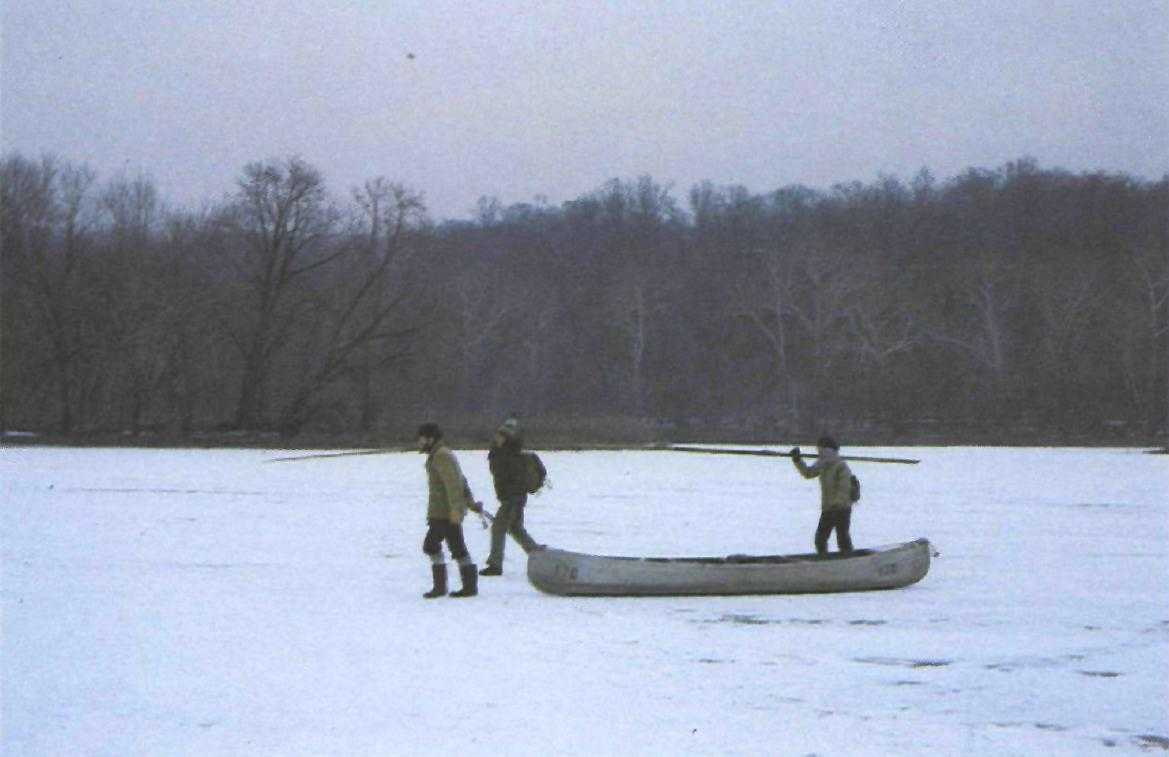James Bond drove an Aston Martin. Jack Ryan rode a bicycle. At CIA, our officers discovered a new way to commute to work every day: by canoe.
In the early 1960s, a few clever CIA officers decided to bypass the maddening, clogged bridges of pre-beltway D.C. and instead began traveling to the Agency by boat, crossing the Potomac River from Maryland into Virginia.
They became known as “the CIA Canoe Pool.”

The “CIA Canoe Pool” crossing the frozen Potomac River, 1980s.
Soon, more officers joined this unique voyage to Langley, and it continued for over 20 years.
In 1984, one of the canoe pool leaders, Robert Sinclair, wrote a now declassified article for CIA’s Studies in Intelligence detailing his and his colleagues’ unique commute to work.
“The chance to observe a little corner of wilderness day in, day out is a rare privilege for a deskbound suburbanite.”
Robert Sinclair, CIA Canoe Pool
Their journey reads almost like the start of a fantasy novel: the CIA officers would make their way, usually by car or bike, to Maryland’s C&O Canal towpath, where they would descend a short flight of steps to the edge of a muddy bog overlooking an Island in the river. There, they’d yank on a weathered rope attached to a cowbell, summoning the island’s caretaker, who would then pull them across the marsh on a small, hand-drawn ferry to Sycamore Island.
Once on the island, they would launch their canoes and paddle across the Potomac to the Virginia shoreline, a distance of about a third of a mile. Safely on shore, they’d chain their canoes to trees, hide the paddles, and then follow an old, crumbling stone path (the remnants of a pre-WWII estate) through a steep, wooded forest to the bluff upon which CIA Headquarters still stands.
According to Sinclair, the entire operation took about an hour in good weather.
Like any daring adventure, the journey wasn’t without its foes: mostly mud and spiderwebs. “A clothes brush at the office helps,” recalled Sinclair, “but there [were] still days when I [tried] to maintain my dignity with patches of dried mud on the lower third of my trousers. Or spider webs.”
Surprisingly, summer was the most difficult time to canoe, because of the intense heat and humidity. Winter, he said, was a joy by contrast. The river rarely froze completely through, and when it did, they carried ice axes and slid their boats like sleds across the solid water.
Unfortunately, the canoe pool finally came to an end in the 1980s because someone started stealing the canoes. It got too expensive to keep replacing them. Nevertheless, the canoe pool remains a legend to this day, still talked about in the halls of CIA Headquarters.
If you want to read the entire tale, written in Sinclair’s beautifully poetic, nature-filled prose, check out the Volume 28, Spring 1984 issue of Studies in Intelligence: "The CIA Canoe Pool."
